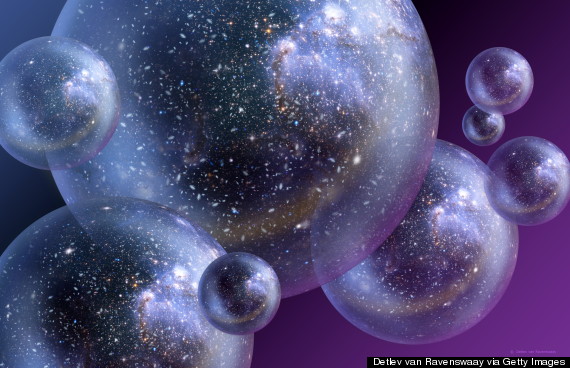At the upper levels of complexity, physics — even to physicists – seems to break down into what essentially comprises a lot of arm waving and confused looks.
But that’s no reason to give up. As Richard Feynman once said, “it is my task to convince you not to turn away because you don’t understand it. You see my physics students don’t understand it… That is because I don’t understand it. Nobody does.”
And a new theory based on decades old conjecture might be about to turn your worlds upside down once again. All of them.
Academics at Griffith University have published a paper stating that not only are there infinite parallel universes, but those worlds actually interact with each other all the time — and that interaction is what makes everything else not make sense.
The Many Worlds theory was first proposed in 1957 by Hugh Everett, who said that the ability of quantum particles to occupy two states seemingly at once could be explained by both states co-existing in different universes. Instead of a ‘waveform collapse’ in which quantum particles ‘decide’ to occupy one state or another, they actually occupy both, simultaneously. And a new branch opens up every time such a ‘decision’ is made.
This theory has risen in popularity since being initially dismissed, and while it’s still a subject of intense debate a new paper seeks to move the theory on.
In a new study, published in the Physical Review X, Professor Howard Wiseman and Dr Michael Hall from Griffith’s Centre for Quantum Dynamics, and Dr Dirk-Andre Deckert from the University of California, argue that parallel worlds aren’t just a bizarre get-out clause for why quantum mechanics is so strange. They argue that their existence itself explains quantum mechanics.
They argue that parallel universes are able to repel each other with a subtle force. The interaction of these Newtonian worlds creates a more complex quantum substructure.
“In the well-known “Many-Worlds Interpretation”, each universe branches into a bunch of new universes every time a quantum measurement is made,” said Wiseman to Phys.org via Griffith University.
All possibilities are therefore realized – in some universes the dinosaur-killing asteroid missed Earth. In others, Australia was colonized by the Portuguese.
“But critics question the reality of these other universes, since they do not influence our universe at all. On this score, our “Many Interacting Worlds” approach is completely different, as its name implies.”
He argues that our world is just one among many, but that the repulsion between them leads to the very quantum mechanics that so confuse physicists.
“The beauty of our approach is that if there is just one world our theory reduces to Newtonian mechanics, while if there is a gigantic number of worlds it reproduces quantum mechanics” said Hall.
He suggests that physicists might even be able to test for the existence of these other worlds – and that by modelling their existence we might be able to explore new forms of maths and physics, potentially with practical implications.


